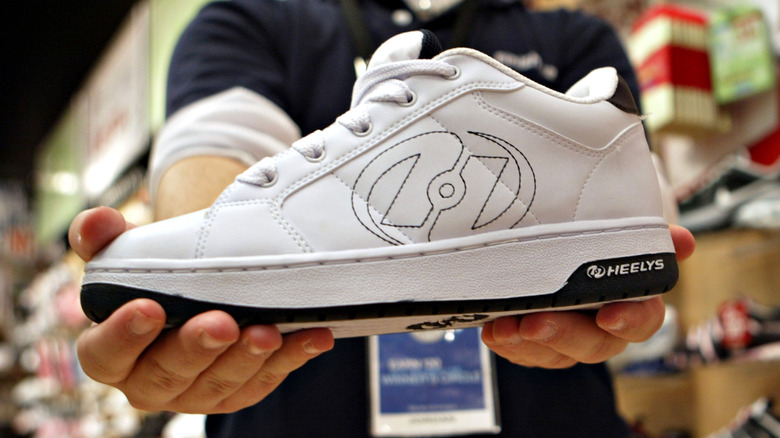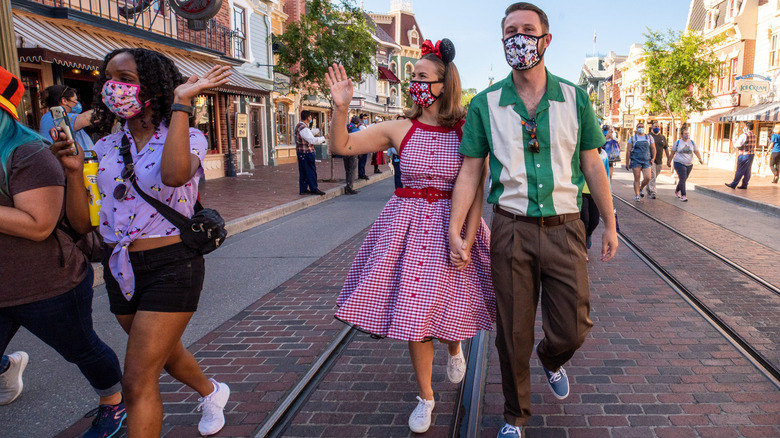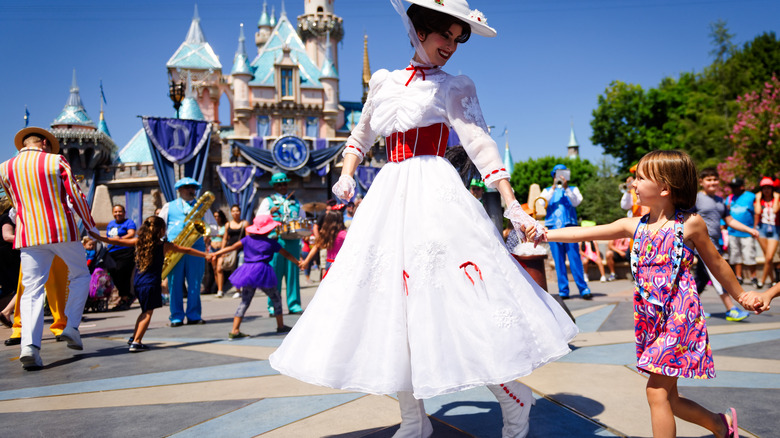The Walt Disney Company does its best to ensure its guests have the most amazing time possible at its beloved theme parks. That’s why Disney will often present themed nights, seasonal treats, and even some magic moments like playing the piano on Main Street USA or steering the Mark Twain Riverboat on the Rivers of America to enhance guests’ experience. However, whether it’s Disneyland, Walt Disney World, or any of the international resorts, some important rules should be followed for the establishment’s safety and that of others.
For example, the park rules have an extended section about what people can and cannot wear while visiting a Disney property. The classic “no shirt, no shoes, no service” rule certainly applies and should go without saying. A further directive explains why adults cannot dress up at Disney Parks; children can confuse them with the official characters roaming the parks. And another mandate prohibits clothing that drags on the ground as well.
But when it comes to footwear, one specific type of shoe is outlawed at the Disney resorts: Heelys, the popular sneakers from the early 2000s with a wheel in the heel to help the wearer get around faster. And just like any other items that go against Disney’s policies, guests can be asked to leave if they possess these restricted items.
Freedom is a wheel in your sole

The instinct to utilize wheels in a Disney park is understandable. After all, they are vast pieces of land that require a fair amount of walking to get around. It can be pretty easy to rack up 20,000 steps or more in one day at Disneyland without even realizing it. However, wearing Heelys during your visit to the park might cut down on the steps and save you some foot pain later on, right? While that may be true, Disney has still included them on its list of banned items, along with weapons, drugs, and selfie sticks.
In addition to shoes with built-in wheels, various other wheeled items are prohibited in the parks as well. As expected, this includes skateboards, skates, scooters, bicycles, suitcases, and remote-controlled electronics like toys or drones. Strollers under 31 inches in width and 52 inches in length and wheeled mobility devices with three or more wheels are okay, but wagons and trailer-like apparatuses that need to be pulled by these items are not.
The ban on shoes with built-in wheels explained

Interestingly enough, Heelys were not always banned at Disney resorts. The ESPN Wide World of Sports Complex hosted product demonstrations in the late 2000s featuring the National Heelys Team on vert ramps and street courses around the campus. This was part of a partnership deal that saw Heelys sponsor Disney’s Endurance Series Kids’ Races, which promoted families exercising together.
But as logical as that agreement seemed, the shoes just aren’t practical in a theme park setting. Due to Disney’s incredible attention to detail, even the ground where guests are walking and not necessarily paying any attention is a part of the immersive storytelling of the parks. Wearing the wrong footwear (including flip-flops or heels) increases the chances of injury or lawsuits from tripping and falling. As such, the company had to implement these strict wheel-related guidelines for liability purposes.
Luckily, there are still options for guests concerned about their feet during their visit to the happiest place on Earth (or one of the other sibling parks). A nice broken-in pair of sneakers should do the trick to keep your feet happy while walking around. An additional padded insert may add extra comfort as well. Alternatively, some planDisney panelists suggest wearing Crocs to a theme park since many find them comfortable and waterproof.

